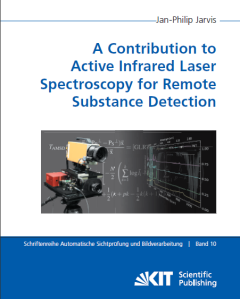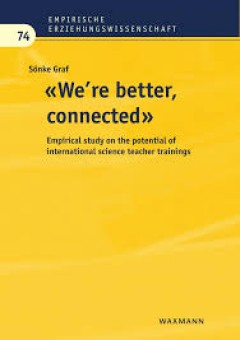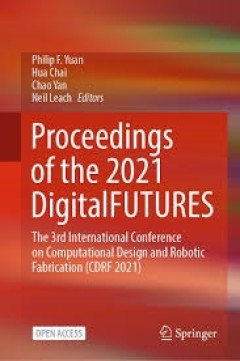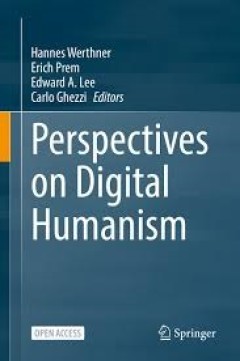Filter by

Advances in Human Computer Interaction
We live in a dramatically evolving knowledge society that is founded on the assumption of equal access to relevant skills and technology-dispensed knowledge. If so, then effective inclusion in society requires powerful new learning resources
- Edition
- -
- ISBN/ISSN
- 9789537619152
- Collation
- -
- Series Title
- -
- Call Number
- -

A Contribution to Active Infrared Laser Spectroscopy for Remote Substance Det…
In this work we present a stand-off, long wave infrared (LWIR) spectroscopy system for remote detection of hazardous substances. The principle is based upon wavelength selective illumination using External Cavity Quantum Cascade Lasers, that are tunable in the LWIR wavelength range from 7.5 - 10 µm, in which most chemical substances exhibit a highly characteristic absorption behaviour.
- Edition
- -
- ISBN/ISSN
- 978-3-7315-0725-3
- Collation
- 189 hlm
- Series Title
- -
- Call Number
- 543.5 JAR c

15th International Conference “Intelligent Systems” (INTELS’22)
The 15th International Conference "Intelligent Systems - 2022" (INTELS'22) was held on 14-16 December 2023 at the Russian Academy of Sciences, Moscow, Russia. It is a biennial event with a thirty-year history. INTELS'22 focused on the areas of intelligent systems and artificial intelligence, their theoretical aspects, and their application to sustainable development. Most of the papers are devo…
- Edition
- -
- ISBN/ISSN
- 9783036592886
- Collation
- -
- Series Title
- -
- Call Number
- -

“We’re better, connected”
How to improve science teacher effectiveness? In order to find answers to this question a first step in this study is a close observation and critical reflection on the level of science teacher training courses. During an international science teacher training course, which had been previously developed in a three-year European project (CAT4U), informal conversations of the participants were re…
- Edition
- -
- ISBN/ISSN
- 9783830940371
- Collation
- -
- Series Title
- -
- Call Number
- -

Proceedings of the 2021 DigitalFUTURES : The 3rd International Conference on …
- Edition
- -
- ISBN/ISSN
- 978-981-16-5983-6
- Collation
- -
- Series Title
- -
- Call Number
- -
- Edition
- -
- ISBN/ISSN
- 978-981-16-5983-6
- Collation
- -
- Series Title
- -
- Call Number
- -

Perspectives on Digital Humanism
- Edition
- -
- ISBN/ISSN
- 978-3-030-86144-5
- Collation
- -
- Series Title
- -
- Call Number
- -
- Edition
- -
- ISBN/ISSN
- 978-3-030-86144-5
- Collation
- -
- Series Title
- -
- Call Number
- -

User Experience + Artificial Intelligence = Assessing the Qualities of AI-inf…
This open access book addresses the thriving trend of embedding artificial intelligence (AI) and machine learning (ML) capabilities in products and services reaching the lay public, focusing on the user experience (UX) they prompt from a designerly perspective. It offers a UX evaluation method designed explicitly for AI-infused systems to answer one of the core problems affecting the relationsh…
- Edition
- -
- ISBN/ISSN
- 9783031775215
- Collation
- XI, 107hlm; ill., lamp.,
- Series Title
- -
- Call Number
- -

Tools and Algorithms for the Construction and Analysis of Systems = 31st Inte…
The open access book set LNCS 15696, 15697 and 15698 constitutes the proceedings of the 31st International Conference on Tools and Algorithms for the Construction and Analysis of Systems, TACAS 2025, which was held as part of the International Joint Conferences on Theory and Practice of Software, ETAPS 2025, during May 3-8, 2025, in Hamilton, Canada. The 46 papers presented were carefully r…
- Edition
- -
- ISBN/ISSN
- 9783031906602
- Collation
- XXI, 269 hlm; ill., lamp.,
- Series Title
- -
- Call Number
- -

Tools and Algorithms for the Construction and Analysis of Systems = 31st Inte…
The open access book set LNCS 15696, 15697 and 15698 constitutes the proceedings of the 31st International Conference on Tools and Algorithms for the Construction and Analysis of Systems, TACAS 2025, which was held as part of the International Joint Conferences on Theory and Practice of Software, ETAPS 2025, during May 3-8, 2025, in Hamilton, Canada. The 46 papers presented were carefully r…
- Edition
- -
- ISBN/ISSN
- 9783031906435
- Collation
- XXVII, 399 hlm,: ill, lamp;
- Series Title
- -
- Call Number
- -

Tools and Algorithms for the Construction and Analysis of Systems = 31st Inte…
The open access book set LNCS 15696, 15697 and 15698 constitutes the proceedings of the 31st International Conference on Tools and Algorithms for the Construction and Analysis of Systems, TACAS 2025, which was held as part of the International Joint Conferences on Theory and Practice of Software, ETAPS 2025, during May 3-8, 2025, in Hamilton, Canada. The 46 papers presented were carefully r…
- Edition
- -
- ISBN/ISSN
- 9783031906534
- Collation
- XX, 387hlm,: ill, lamp; 21 cm
- Series Title
- -
- Call Number
- -
 Computer Science, Information & General Works
Computer Science, Information & General Works  Philosophy & Psychology
Philosophy & Psychology  Religion
Religion  Social Sciences
Social Sciences  Language
Language  Pure Science
Pure Science  Applied Sciences
Applied Sciences  Art & Recreation
Art & Recreation  Literature
Literature  History & Geography
History & Geography